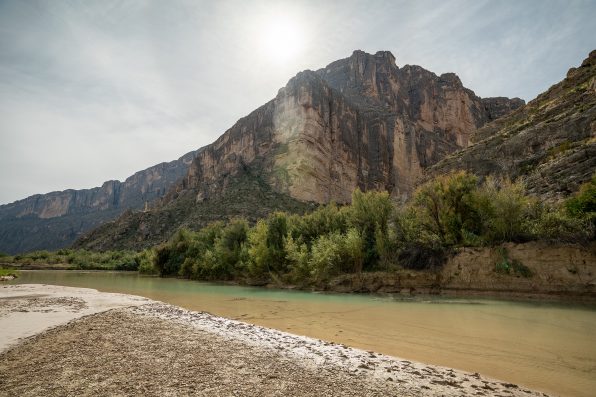Water Levels In Texas Dipped So Low At This Lake, It Uncovered Ruins From The 19th Century

In Texas, water levels dipped so low at Canyon Lake that a previously hidden underwater cave and ruins of communities from the nineteenth century have made an appearance.
Canyon Lake is located just outside of San Antonio. According to the U.S. Army Corps of Engineers, it was constructed in 1958 to help with flood control and water conservation. By 1968, it was completely filled with water.
The man-made lake stretches across 8,200 acres and has over 80 miles of shoreline. Over the summer, the area has received very little rain. The drought, combined with high temperatures, has produced water levels at an all-time low.
The U.S. Army Corps of Engineers stated that the lake is 18 feet lower than normal and is the lowest recorded level ever in recent history.
The reduced water levels have led to the reappearance of Hancock and Crane’s Mill, towns that were founded by Germans in the 1850s.
Crane’s Mill was developed by James B. Crain and John Lackey, who brought their skills of running various mills.
The town of Hancock was named after a man called John Hancock. Over time, the small, tight-knit communities dwindled in population. By the 1950s, many of the buildings were torn down.
Currently, remnants of a house can be seen lying on the floor of the lake, along with remains of the Hancock bridge.
The emergence of historical ruins is always exciting to find, but there are also some concerns from local residents about the disappearing lake and the complications it might present.

Matthew – stock.adobe.com – illustrative purposes only
“I haven’t seen the water this low since I moved here. It’s actually kind of sad,” said one resident. On September 2, only a small part of the cave was visible, but now, the vast entrance of the cave with stalactites hanging from the ceiling has been revealed.
Due to the decreasing water levels, the U.S. Army Corps of Engineers was forced to shut down lakeside recreational activities for safety.
As the lake’s surface has dropped, trash and other items have materialized in addition to the rock formations and the old communities.
“As the lake level drops, there are more underwater hazards such as tree stumps and large rocks that are at or near the surface,” said a spokesperson from the agency. “These hazards present greater risks to boaters and swimmers.”
Sign up for Chip Chick’s newsletter and get stories like this delivered to your inbox.
More About:News





